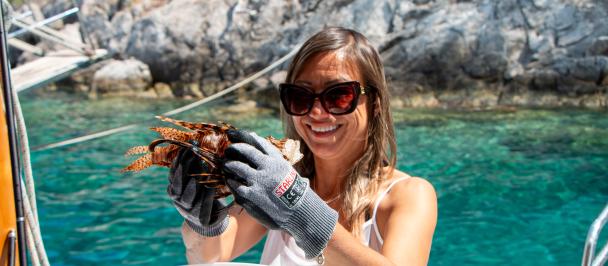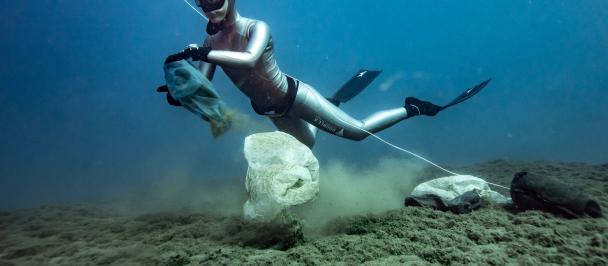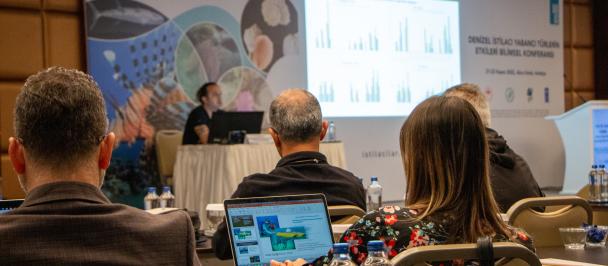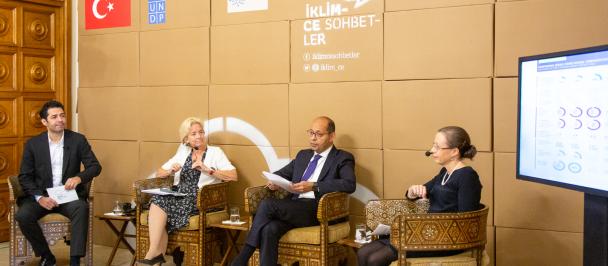Photos: Murat BİLECENOĞLU
The Mediterranean leads the ecosystems most affected by invasive alien species in the world. Turkey is one of the countries which are the most vulnerable to the influx of alien species on this basis both due to the intense maritime traffic through the Turkish Straits and to Turkey’s proximity to the Suez Canal.
Alien species are those introduced by human means from their natural habitat to distant and different ecosystems. Those species that rapidly establish large populations, spread to large areas and adversely affect ecosystems, human health and socio-economy are called “invasive alien species”. The Suez Canal had been opened 150 years ago and now is the main vector of alien species as it links the tropical Red Sea to the subtropical Mediterranean. Maritime shipping is the second vector as researchers establish that thousands of species travel daily to distant destinations by adhering to hulls.
“Addressing Invasive Alien Species Threats at Key Marine Biodiversity Areas Project” is implemented by the General Directorate of Nature Conservation and National Parks of the Ministry of Agriculture and Forestry in cooperation with the United Nations Development Programme (UNDP) funded by the Global Environment Facility (GEF) to enhance the resilience of marine and coastal ecosystems through strengthened capacities and investments in prevention, detection, control and management of invasive alien species.
Recent field studies in four of the pilot areas of the project (Igneada, Marmara Islands, Ayvalık Islands and Samandag) reveal the dramatic magnitude of the impact of invasive species.
The marine and coastal areas of İğneada Floodplain Forests National Park, as one of the important ecosystems of the West Black Sea, now hosts a large population of Veined Rapa Whelk (Rapana venosa) introduced in the 1950s to the Black Sea via travelling by adhering to hulls of ships from the Sea of Japan. While this invasive species, being extremely voracious, adversely impacts the ecosystem by feeding on significant native mussel stocks in the coastal ecosystem, it does nevertheless represent a significant source of revenue for fishers in the region for its commercial value. Turkey is currently one of the top exporters of veined whelk in the world. As disclosed by the East Black Sea Exporters’ Union, Turkey sold 1,347 tonnes of whelk to 6 countries from January to August 2020 for an export revenue of 9 million USD.
The Marmara Islands, yet enjoying no natural protection status, are highly special for its extraordinary biodiversity. Not studied earlier in detail for its marine biological richness, the underwater life in the region is amazing to the research teams today. A major reason appears to be the discovery that the Marmara Islands still host healthy local populations of many protected species under such international conventions as Bern and Barcelona as well as the Red List issued by IUCN. Current research investigates the widespread and potential impact of veined whelk on the coasts of the Black Sea as well as the Marmara Sea. Another invasive species addressed by the project is Common Starfish (Asterias rubens) believed to have been introduced to the region by maritime shipping. The said starfish adversely impacts the ecosystem both by competing with the native species in the habitat and feeding on the native mussels.
Ayvalık Islands Natural Park, a most vulnerable biodiversity centre of the northern Aegean Sea, has long been under the intensive threat of Caulerpa seaweed (Caulerpa cylindracea), a kind of green algae, introduced to our coasts through the Suez Canal. As one of the most invasive species in the Mediterranean ecosystem, Caulerpa seaweed is identified to have at least 20 forms of adverse impact on biodiversity and habitats. The direct threat to Ayvalık Islands comes from its impact on the seagrass (Posidonia oceanica) beds, an extremely important habitat. Extremely opportunist and able to rapidly grow, C.cylindracea swiftly invades the already damaged seagrass beds. The cause of damage is unfortunately the frequent anchoring by daily boat tours. It is critical to implement mooring buoys first in the tourism-oriented coves then in the entire area so that the ecosystem can be preserved naturally and resist the incursion of invasive species.
We will address, in a future news bulletin, our findings on Samandağ coasts as the initial entry point for alien species arriving from the Red Sea. There is consensus among scientists that invasive species represent one of the major threats to biodiversity. Once they arrive and spread in the ecosystem, it is almost impossible to eradicate such species; therefore, the key to tackle this problem is to create effective mechanisms to prevent their introduction to our coasts. Project activities focus on all components necessary for a promising struggle. National policies are formulated against invasive species, while capacity-building work is underway to identify and manage threats. Priority action involves preventing the entry of alien species, or keep under control if prevention is not possible.
Effective outcomes in combating invasive species through awareness raised by project activities stand out to provide guidance to all Mediterranean countries.

 Locations
Locations



